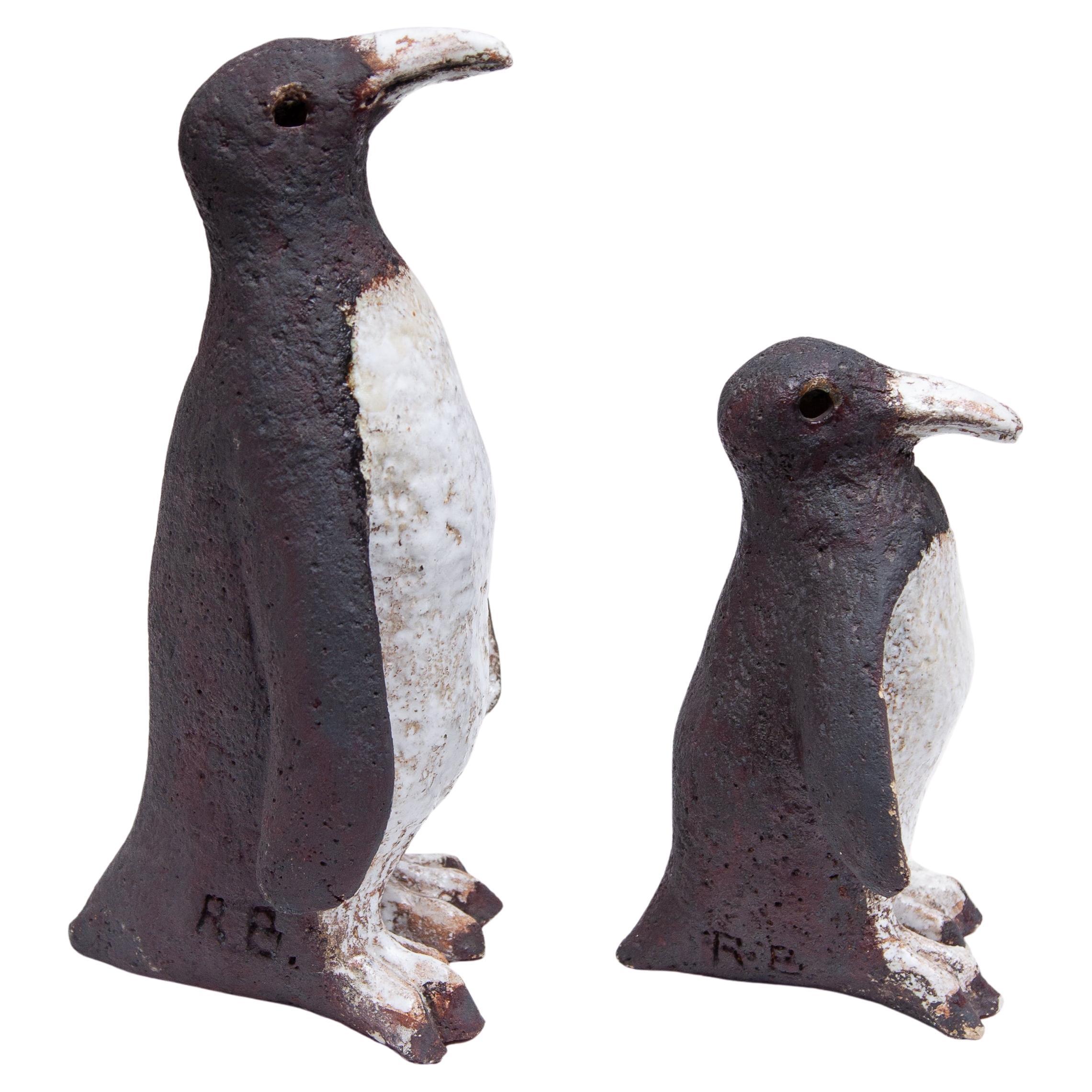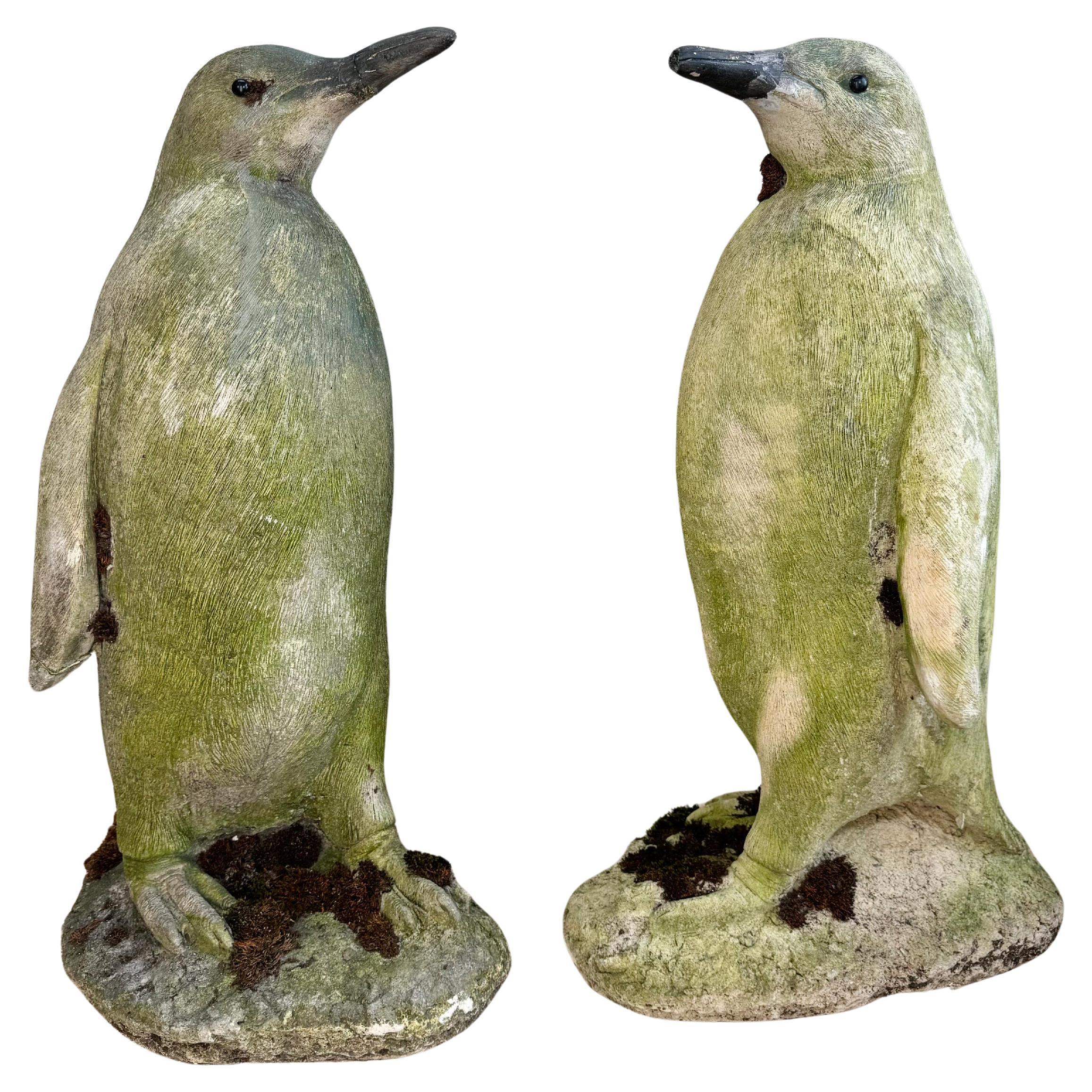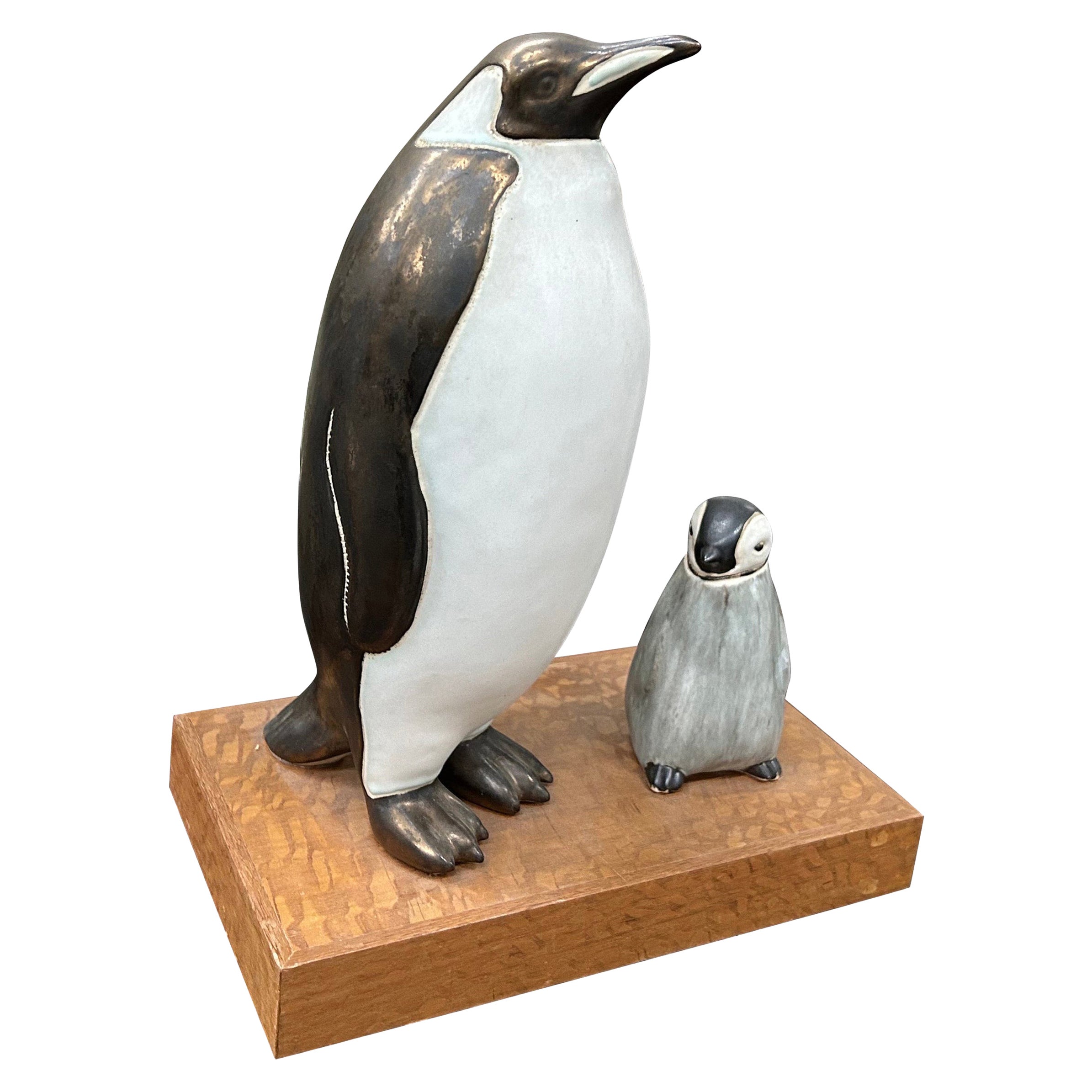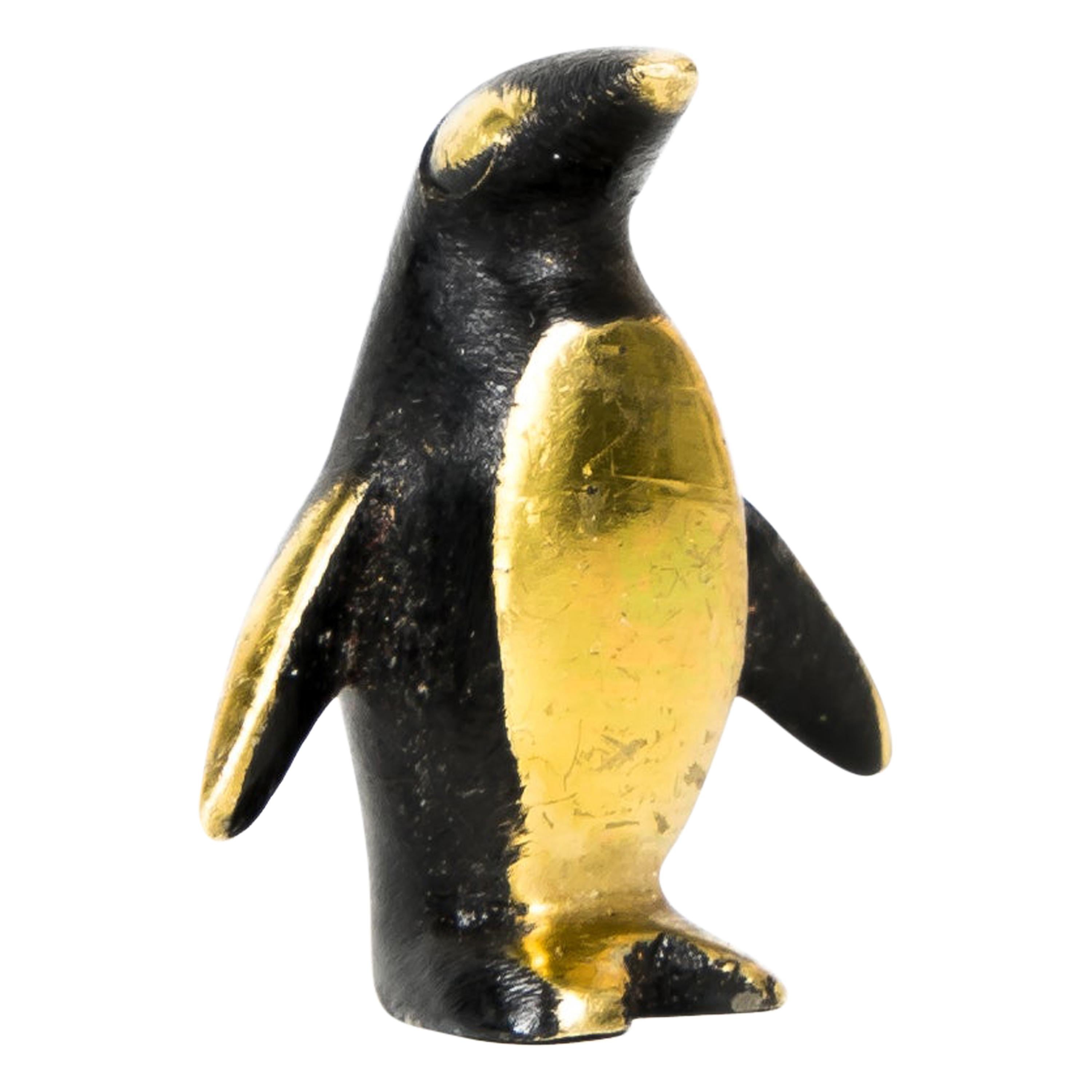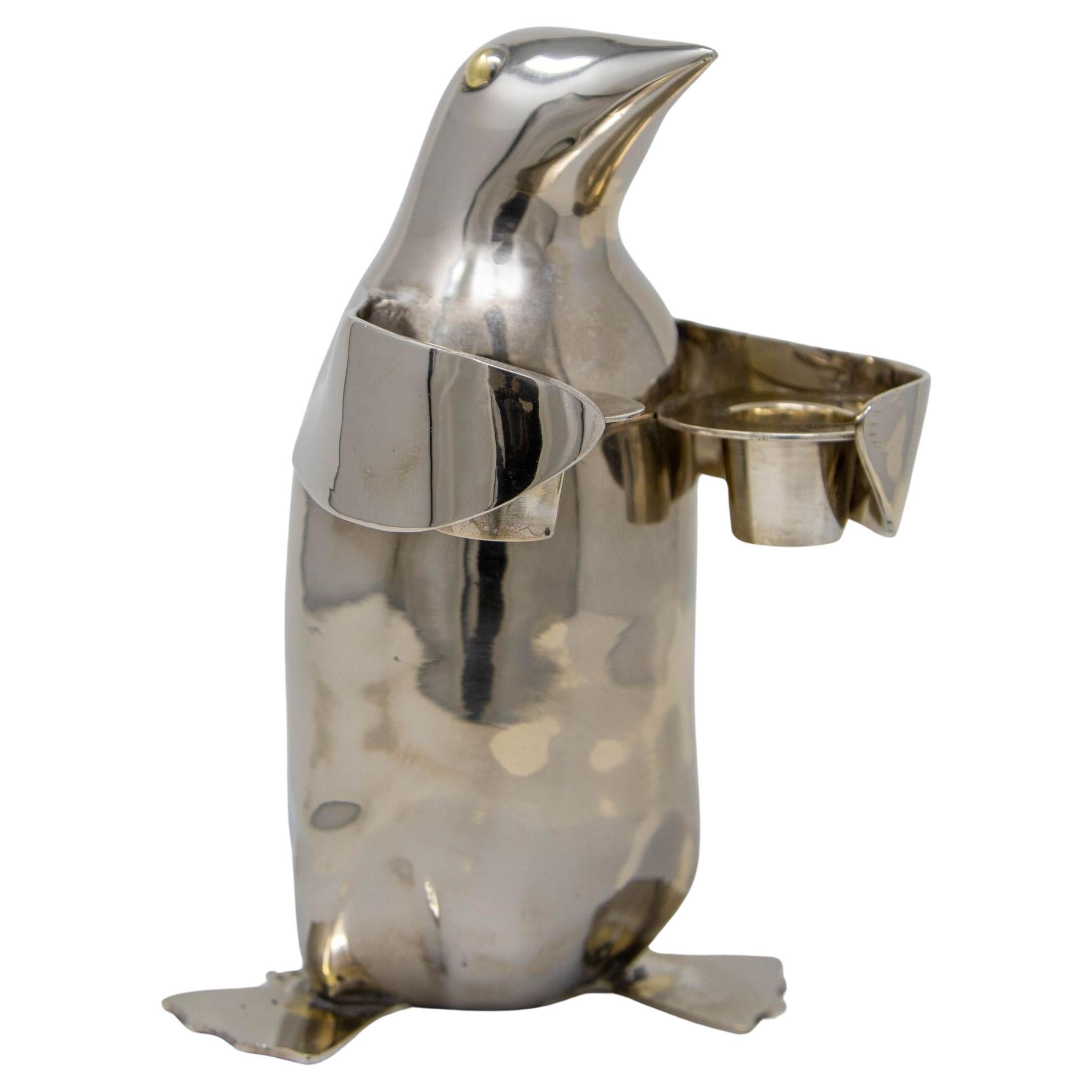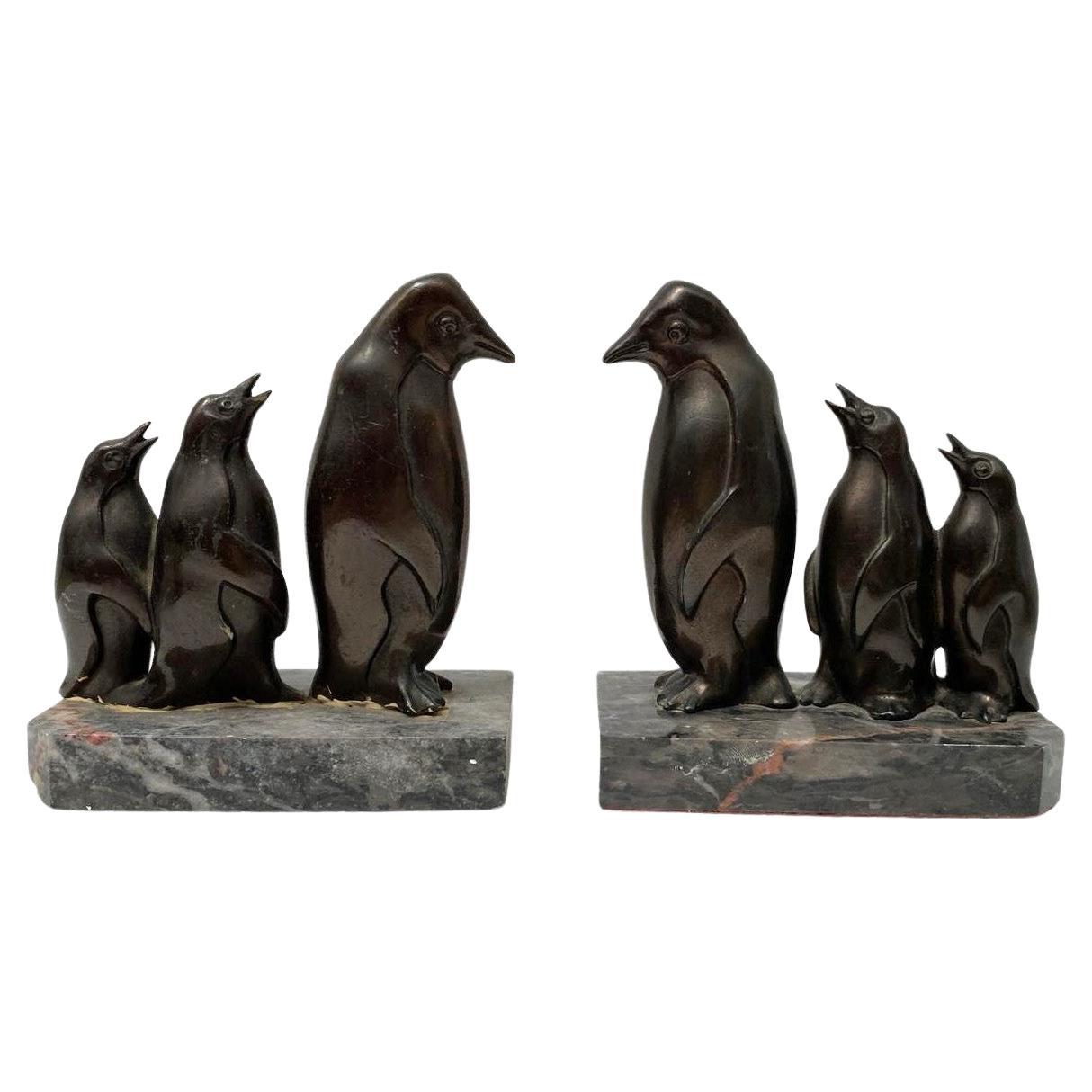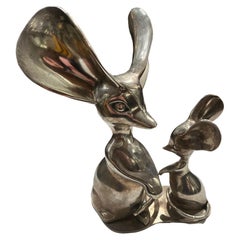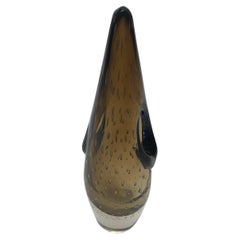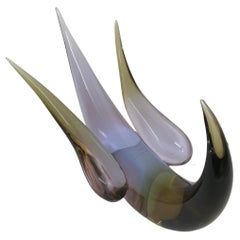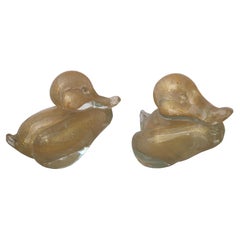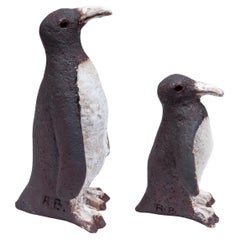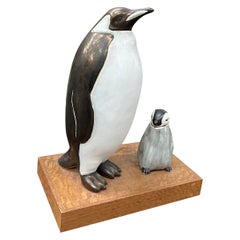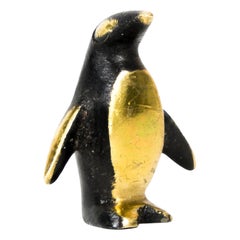Items Similar to 2 penguin sculptures, 1950
Video Loading
Want more images or videos?
Request additional images or videos from the seller
1 of 22
2 penguin sculptures, 1950
$3,500per set
£2,631.08per set
€3,050.25per set
CA$4,886.54per set
A$5,473.19per set
CHF 2,847.88per set
MX$66,471.49per set
NOK 36,103.91per set
SEK 34,066.73per set
DKK 22,759.21per set
Shipping
Retrieving quote...The 1stDibs Promise:
Authenticity Guarantee,
Money-Back Guarantee,
24-Hour Cancellation
About the Item
We have specialized in the sale of Art Deco and Art Nouveau and Vintage styles since 1982. If you have any questions we are at your disposal.
Pushing the button that reads 'View All From Seller'. And you can see more objects to the style for sale.
Why are there so many antiques in Argentina?
In the 1880 – 1940 there was a grate wave of immigration encouraged by the periods of war that were taking place.
1st World War took place between 1914 and 1918
2nd World War took place between 1939 and 1945
The immigrants options were New York or Buenos Aires. Tickets were cheap and in Buenos Aires they were welcomed with open arms, as it was a country where everything was still to be done.
Argentina was the country of new opportunities, labour was needed and religious freedom was assured, in many cases the of the family travel first until they were settled and then the rest of the family members join them.
In the immigrant museum “Ellis Island Immigrant Building” in New York you can se the promotional posters of the boats that would take them to a new life.
Between the years 1895 and 1896, Argentina had the highest DGP (gross domestic product) per capita in the world according to the Maddison Historical Statistics index, this situation arose due to the large amount of food being exported to European countries, which were at war.
The Argentinean ships left the port of Buenos Aires with food, but they returned with furniture, clothes and construction elements, (it´s common to see this the old buildings of the historic neighbourhood of San Telmo, the beams with the inscription “Made in England)”, as well as many markets that were built in Buenos Aires, such us the San Telmo Market, whose structure was brought by ship and afterwards assembled in 900 Defensa Street.
With the great influence of European immigrants living in the country, the children of the upper classes travelled to study in France, resulting in the inauguration of “La Maison Argentinienne”, on 27th of June 1928, in the international city of Paris, which hosted many Argentinians that were studying in Frace.
It´s the fourth house to be built after France, Canada and Belgium, being the first Spanish-speaking one. Still in place today (17 Bd Jourdan, 75014, Paris, France). Many of the children of these wealthy families who attended international art exhibitions, museums and art courses abroad, took a keen interest in the European style. This is why Buenos Aires was at the time referred as “The Paris of South America”.
Between the years 1890 and 1920 more than a hundred Palaces were built on Alvear Avenue the most exclusive avenue in Buenos Aires. Today some of these palaces have been transformed into museums, hotels and embassies.
In the year 1936, the Kavanagh building was inaugurated, it was the tallest reinforced concrete building in South America.
During 1994 the American Society of Civil Engineers distinguished it as an “international engineering milestone”, and it´s now considered a World Heritage of Modern Architecture.
At the time was common to hire foreign architects such as Le Corbusier, who visited Buenos Aires/Argentina in 1929 and in 1948 he drew up the blueprints for a house built in La Plata City (which was declared a World Heritage Site).
In 1947, the Hungarian architect Marcelo Breuer designed “Parador Ariston” in the seaside city of Mar del Plata. After an Argentinean student at Harvard University convinced him to come to Argentina. He worked on an urban development project in the Casa Amarilla, area of La Boca.
The Ukrainian architect, Vladimiro Acosta, arrives in Argentina in 1928 and worked as an architect until que moved to Brazil.
Antonio Bonet, a Spanish architect who worked with Le Corbusier in Paris, arrives in Argentina in 1937, where he carried out several architectural works and in 1938 designs the well-known BFK chair.
Andres Kálnay, of Hungarian origin, made around 120 architectural masterpieces, among which the former Munich brewery stands out, he even made the furniture’s design.
The German architect, Walter Gropius, director of the Bauhaus, lived in Argentina, where he wrote articles for “Sur” magazine and founded in Buenos Aires, an architectural firm with Franz Möller, who was also an architect, where he built two houses.
At the same time several famous designers decided to immigrate to Argentina, among them we can find the well-known French designer, Jean-Michel Frank, who arrived in the country in 1940 and also worked for the Rockefeller family.
Special pieces were made, which were sold exclusively in the country, such as the well-known German company “WMF”, who sold their products by catalogue, which were chosen by the ladies of high society in the list of wedding gifts, as well as the pieces designed by Christofle.
The Swiss sculptor Alberto Giacometti, made special pieces for Argentinean mansions.
In 1904 the first Jansen branch outside Paris was established in Buenos Aires, as the Argentinean clientele demanded a large amount of furniture, from the end of the 19th century to the mid-20th century.
In 1970, the brand Rigolleau Argentina made pieces authorised by Lalique.
The brands Maple and Thompson also set up shop in the country.
The French plastic artist, Marcel Duchamp moved to Argentina in 1918-1919.
Glass signed Gallé, Charder, Leverre, Schneider, Muller and other French firms. They were bought in flower shops and were given to ladies with beautiful floral arrangements.
Some furniture manufacturers travelled to international fairs and bough the patterns to produce the furniture in Argentina, such as the furniture firm Englander and Bonta, who bought the patterns ins Italy.
It is worth mentioning that in Argentina we have the largest community of Italians outside of Italy, as it is estimated that 70 percent of the inhabitants have at least one Italian descendant, followed by Spanish immigrants.
The most Important furniture stores in Argentina:
Comte is founded in 1934 (under the direct management of Jean Michel Frank in 1940).
Nordiska (Swedish company established in 1934).
Churba in 1960, a company that brought foreign designers to present their furniture in the country:
Denmark: (Arne Jacobsen, Finn Juhl, Bender Madsen, Ejner Larsen, Poul Kjaerholm, Hans Wegner)
Sweden: (Hans Agne Jakobsson, Gustavsberg)
United States: (Herman Miller)
Finland: (Lisa Johansson, Folke Arstrom, Tapio Wirkkala, Alvar Aalto, Timo Sarpaneva)
Swedish Factory: (Orrefors)
Italy: (Littala, Vico Magistretti, Emma Gismondi, Gae Aulenti, Angelo Mangiarotti, Elio Martinelli, Gianna Celada, Angelo Mangiarotti, Mario Bellini, Carlo Scarpa)
Finland: (Olivia Toikka)
Plata Lappas (Lappas Silver): a goldsmith shop founded in 1887 in Argentina by Alcibiades Lappas of Greek origin.
In 2019, in Argentina took place “the Art Deco world congress”, in which we participated as hosts invited by Geo Darder, founder of the Copperbridge – Foundation, in which prominent people from all over the world attended to learn about Art Deco in Argentina.
Argentina currently has more than 100 Art Deco buildings and another 90 Art Nouveau buildings throughout the city of Buenos Aires.
Argentina is a country that has not been involved in many wars, which is why it has been a refuge for works of art and antiques from different periods of time, unlike European countries. That is way many collectors, museums and antique dealers from all over the world visit it, you should not miss the opportunity to visit this great country.
Laura Guevara Kjuder, architect.
- Dimensions:Height: 5.52 in (14 cm)Width: 4.34 in (11 cm)Depth: 4.34 in (11 cm)
- Sold As:Set of 2
- Style:Mid-Century Modern (Of the Period)
- Materials and Techniques:
- Place of Origin:
- Period:
- Date of Manufacture:1950
- Condition:Wear consistent with age and use.
- Seller Location:Ciudad Autónoma Buenos Aires, AR
- Reference Number:1stDibs: LU6785235868972
About the Seller
5.0
Vetted Professional Seller
Every seller passes strict standards for authenticity and reliability
Established in 1982
1stDibs seller since 2022
36 sales on 1stDibs
Typical response time: <1 hour
- ShippingRetrieving quote...Shipping from: Hollywood, FL
- Return Policy
Authenticity Guarantee
In the unlikely event there’s an issue with an item’s authenticity, contact us within 1 year for a full refund. DetailsMoney-Back Guarantee
If your item is not as described, is damaged in transit, or does not arrive, contact us within 7 days for a full refund. Details24-Hour Cancellation
You have a 24-hour grace period in which to reconsider your purchase, with no questions asked.Vetted Professional Sellers
Our world-class sellers must adhere to strict standards for service and quality, maintaining the integrity of our listings.Price-Match Guarantee
If you find that a seller listed the same item for a lower price elsewhere, we’ll match it.Trusted Global Delivery
Our best-in-class carrier network provides specialized shipping options worldwide, including custom delivery.More From This Seller
View AllSculpture Mice, Year: 1950, Made in Austria
Located in Ciudad Autónoma Buenos Aires, C
Material: silver plated bronze
We have specialized in the sale of Art Deco and Art Nouveau and Vintage styles since 1982. If you have any questions we are at your disposal.
Pushing...
Category
Vintage 1950s Austrian Mid-Century Modern Animal Sculptures
Materials
Metal
Murano, 1930, Italian
Located in Ciudad Autónoma Buenos Aires, C
Murano
We have specialized in the sale of Art Deco and Art Nouveau and Vintage styles since 1982. If you have any questions we are at your disposal.
Pushing the button that reads 'Vi...
Category
Vintage 1930s Italian Art Deco Abstract Sculptures
Materials
Murano Glass
$5,800
Bird Murano, 1930, Italian
Located in Ciudad Autónoma Buenos Aires, C
Murano
We have specialized in the sale of Art Deco and Art Nouveau and Vintage styles since 1982. If you have any questions we are at your disposal.
Pushing the button that reads 'Vi...
Category
Vintage 1930s Italian Art Deco Animal Sculptures
Materials
Murano Glass
Ducks Murano, 1940, Italian, Attributed to Seguso, Barovier
By Barovier Seguso & Ferro
Located in Ciudad Autónoma Buenos Aires, C
Murano with gold
We have specialized in the sale of Art Deco and Art Nouveau and Vintage styles since 1982. If you have any questions we are at your disposal.
Pushing the button that reads 'View All From Seller'. And you can see more objects to the style for sale.
Attributed to Seguso - Barovier
We have specialized in the sale of Art Deco and Art Nouveau and Vintage styles since 1982. If you have any questions we are at your disposal.
The history of "Seguso Vetri D' Arte" is directly linked to the "Vetreria Artistica Barovier" company. When the Barovier workshop was forced to reduce production in 1929, due to a financial crisis in America, the
original group of ten partners had to separate and Antonio Seguso in 1931, assisted by his sons Ernesto and Archimede opened a small workshop of his own. They were joined by Luigi Olimpio Ferro and Napoleone Barovier the following year. Together the craftsmen establish the "Artistica Soffieria e Vetreria Barovier Seguso & Ferro" company as equal partners.
In 1934 Flavio Poli joins the firm as artistic director and within only a brief period of time a distinct style of designs emerged. The close collaboration between Flavio Poli, Archimede Seguso and Alfredo Barbini played an important part in the success of the company. New glass techniques are developed which include never before seen color applications.
The companies innovative designs constantly received awards and during the 1935 World Fair in Brussels and the 1936 Milan Triennale they did attract the interest of a new group of clientele. One of them is the French wholesale company "Veronese" from Paris which would play a defining role in the history of the company.
The demand for an increase in production requires additional investments and the partners felt that there is a need to multiply their investment tenfold.
Luigi Olimpio Ferro subsequently decided to withdraw from the company and his shares are acquired by Flavio Poli, which makes him a full partner. As a result, the company name is changed to Seguso Vetri D’ Arte and it is officially recognized in 1937. A period of great success and prosperity ensues, lasting until the outbreak of World War II.
The post war period is a time of great change in Europe and the rebuilding of the economical structure in Italy requires major investments which result in the introduction of new import duties and taxes.
To safeguard the copyright of the Seguso Vetri D'Arte designs an application for a second entry into the commercial registers of Venice is made by the partners in 1945.
Strict export regulations curb international business relations for many years after the war and the company decides to focus on the domestic market instead. In 1946 a large retail location is opened at the Piazza Diaz in Milan where in addition to the art glass, German porcelain and Italian pottery is offered.
In 1950 Flavio Poli develops a new sommerso glass technique, which consists of an overlaying of transparent layers of glass. The overlapping creates new shades of color which prior to the introduction of this technique had not been seen. Flavio Poli's most iconic design is the "Valve", which resembles an upright, slightly opened clam shell. The design was introduced in 1951. Mario Pinzoni joins the company in 1953 as a personal assistant to Flavio Poli and his responsibilities as a draftsman included the compilation of archival and the existing production drawing s...
Category
Vintage 1940s Italian Art Deco Centerpieces
Materials
Gold
Sculpture Owl Designer : Guayasamin, Year: 1955
By Oswaldo Guayasamin
Located in Ciudad Autónoma Buenos Aires, C
We have specialized in the sale of Art Deco and Art Nouveau and Vintage styles since 1982. If you have any questions we are at your disposal.
Pushing the button that reads 'View All From Seller'. And you can see more objects to the style for sale.
Oswaldo Guayasamín (July 6, 1919 – March 10, 1999) was an Ecuadorian painter and sculptor of Kichwa and Mestizo heritage.
Biography
Early life
Guayasamín was born in Quito, Ecuador,[2] to a native father and a Mestiza mother, both of Kichwa descent.[3] His family was poor and his father worked as a carpenter for most of his life. Oswaldo Guayasamín later worked as a taxi and truck driver. He was the eldest of ten children in his family. When he was young, he enjoyed drawing caricatures of his teachers and the children that he played with. He showed an early love for art. He created a Pan-American art of human and social inequalities which achieved international recognition.
He graduated from the School of Fine Arts in Quito as a painter and sculptor. He also studied architecture there. He held his first exhibition when he was 23, in 1942. While he was attending college, his best friend died during a demonstration in Quito. This incident would later inspire one of his paintings, Los Niños Muertos (The Dead Children). This event also helped him to form his vision about the people and the society that he lived in.
Career
Guayasamín started painting from the time he was six years old. He loved to draw from that age. Starting from watercolors and transforming all the way through to his signature humanity pieces, his art career had many highlights. Although tragedy molded Guayasamín's work, it was his friend's death that inspired him to paint powerful symbols of truth in society and injustices around him. While his interest was seldom with his school work, he began selling his art before the time that he could even read. After his attendance at the School of Fine Arts in Quito, his career took off.
La Galería Caspicara, an art gallery opened by Eduardo Kingman...
Category
Vintage 1950s Ecuadorean Mid-Century Modern Animal Sculptures
Materials
Bronze
Pair of Art Deco Table Lamps in wood and chrome, France
Located in Ciudad Autónoma Buenos Aires, C
Materia: chromed and wood
Style: Art Deco
Country: France
To take care of your property and the lives of our customers, the new wiring has been done.
If you want to live in the golde...
Category
Vintage 1930s French Art Deco Table Lamps
Materials
Chrome
You May Also Like
A set of Two Penguins Sculptures signed, 1960s
Located in Antwerp, BE
Midcentury modern set of two sculpted clay penguins Mother and Child designed in the 1960s and signed by the artist with RB, black and white glaze. In good original condition.
Category
Vintage 1960s Belgian Mid-Century Modern Animal Sculptures
Materials
Ceramic
$1,910 / set
Pair of Life Size Penguin Garden Statues
Located in Hastings, GB
A super pair of life size garden statues, modeled as Penguins and made from reconstituted stone, English, circa 1970's. Aging and moss from tim...
Category
Vintage 1970s English Mid-Century Modern Statues
Materials
Stone
$1,653 / set
Vintage Ceramic Penguin Sculpture
Located in Houston, TX
Vintage Ceramic Penguin Sculpture.
This lovely 20th century Art Deco style animal sculpture featurring ceramic mother and baby penguins mounted on a woo...
Category
20th Century Unknown Art Deco Animal Sculptures
Materials
Ceramic, Wood
Small Penguin by Walter Bosse, Around 1950s
By Walter Bosse, Herta Baller
Located in Wien, AT
Small penguin by Walter bosse, around 1950s
Marked Austria on Bottom
Original condition.
Category
Vintage 1950s Austrian Mid-Century Modern Animal Sculptures
Materials
Brass
Vintage Silver Plated Penguin Paperweight Shelf Decor
Located in North Hollywood, CA
Vintage art deco revival style silver plated heavy penguin paperweight.
In very good vintage preowned condition, the penguin is bright and well made and shows minimal signs of wear.
...
Category
1990s American Paperweights
Materials
Metal
Art Deco Pair of Family Penguin Bookends, French, C1930
Located in Devon, England
Very stylish and rare matching pair of Art Deco bookends. These are a great find and in exceptional condition. Originating from France and dating to the 1930s both stand on marble ba...
Category
Mid-20th Century French Art Deco Bookends
Materials
Marble, Spelter
More Ways To Browse
Desk Sculptures
World War 2 Furniture
Vintage 70s Desk
1945 Desk
Large Chrome Sculpture
Finland Desk
Used Student Desks
Vintage Travel Accessories
Bauhaus Chrome Desk
Spanish Desk Chair
1940 Antique Desk
Herman Miller Glass Desk
90s Desk
Mid Century Student Desk
Danish Mid Century Modern Chrome Desk
Penguins Sculptures
Jean Michel Frank Desk
Ladies Desk Chair
